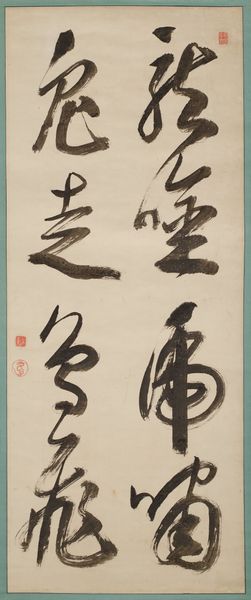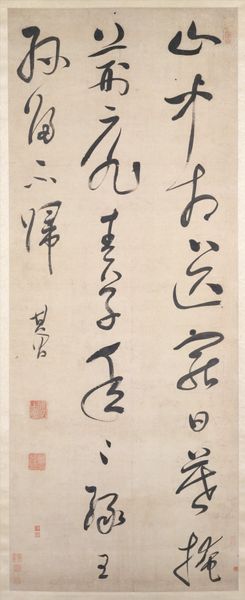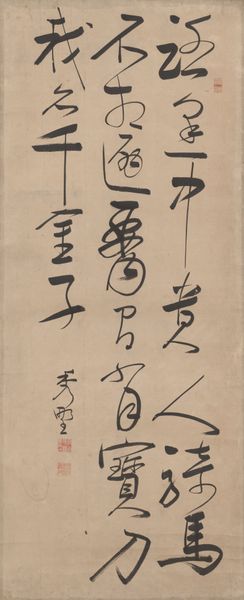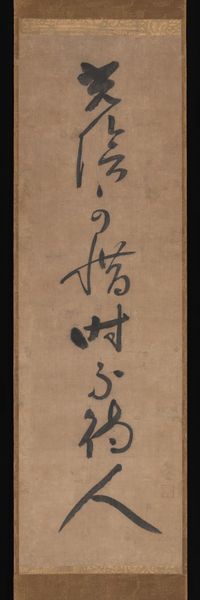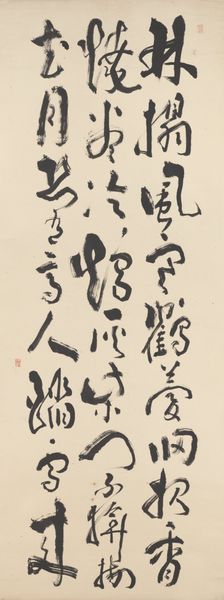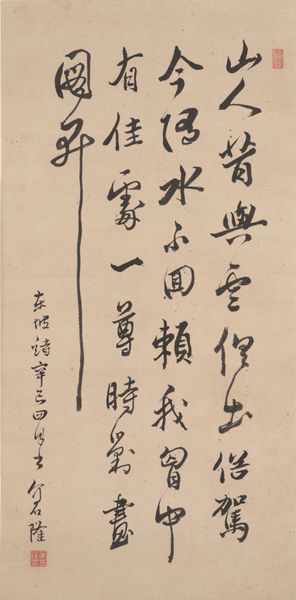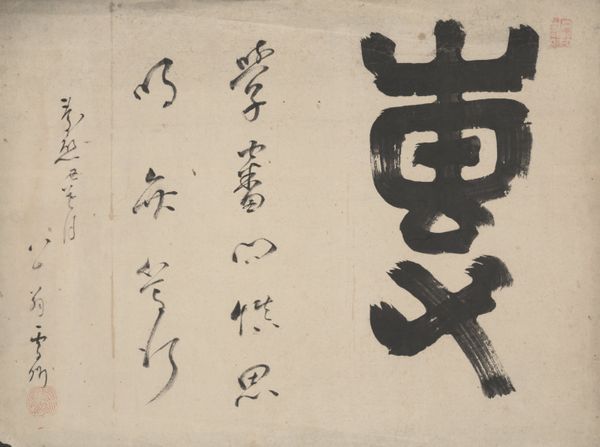
Dimensions: 44 × 5 3/4 in. (111.76 × 14.61 cm) (image)
Copyright: Public Domain
This hanging scroll was created by Itsuzan in 18th-century Japan. Executed in ink on paper, it presents a Confucian principle. During Itsuzan’s lifetime, Confucian ideals were often used to reinforce hierarchical social structures. This work reflects an era when personal expression navigated established cultural norms. Itsuzan, himself, was a complex figure, deeply influenced by both Confucianism and more individualistic philosophies. The bold calligraphy embodies a tension between discipline and freedom, reflecting the artist’s negotiation between societal expectations and personal identity. We are invited to consider how systems of thought shape individual actions and artistic expression, and to think about our own negotiation between self and society.
Comments
minneapolisinstituteofart almost 2 years ago
⋮
Born in Osaka, Itsuzan studied seal script and seal carving and presented his findings to the government at the early age of 16. In 1738 he became a Buddhist monk and around ten years later moved to Nagasaki to study the colorful Chinese bird and flower painting style. In 1757 he settled down at a temple in Kyoto where he responded to the many requests for his painting and calligraphy. This single line of seal script is from this later period and is based off of Confucian teachings. 行仁義事 致遠經方Implement benevolent and righteous actions;Expand them afar, so the standard is corrected.(Trans. Stephen Addiss)
Join the conversation
Join millions of artists and users on Artera today and experience the ultimate creative platform.

